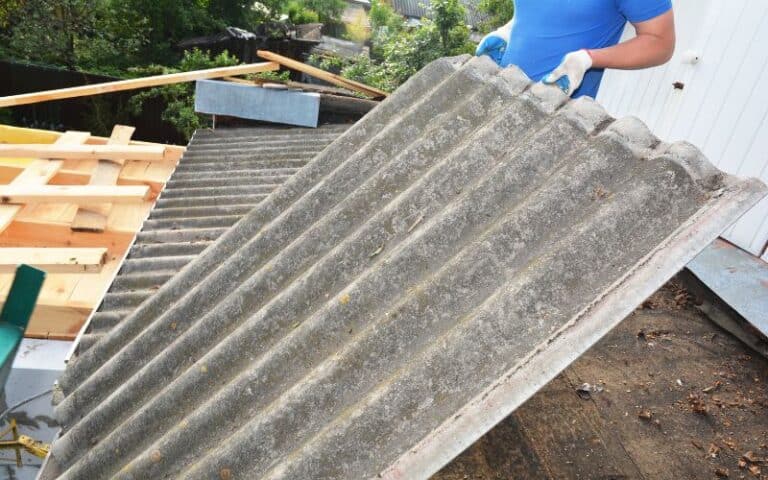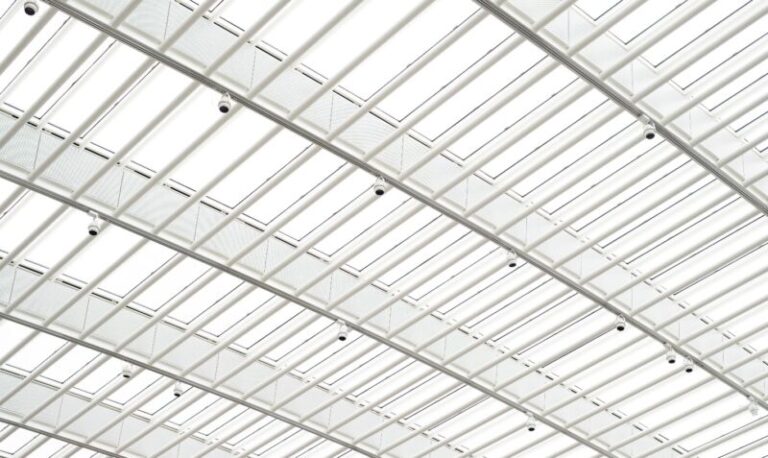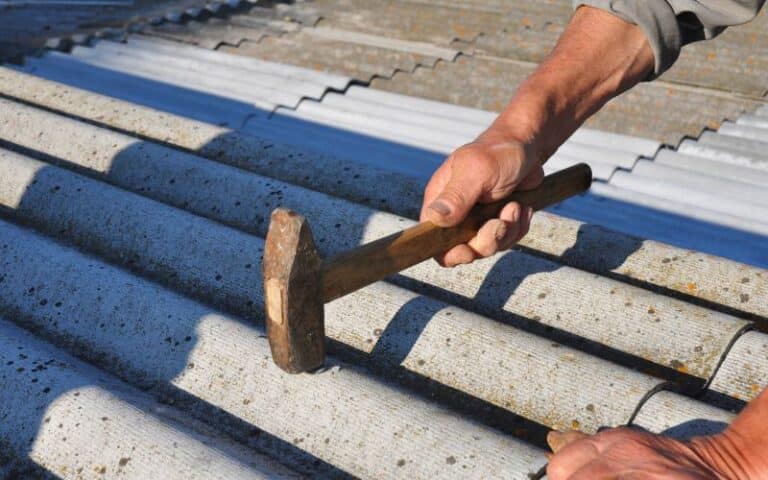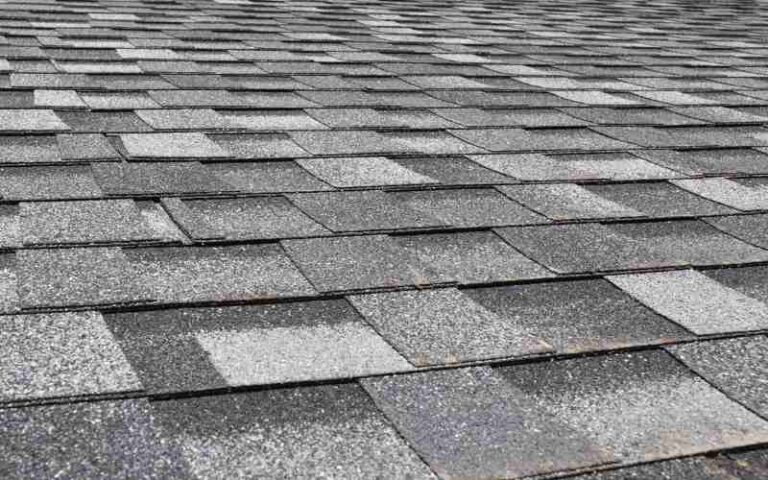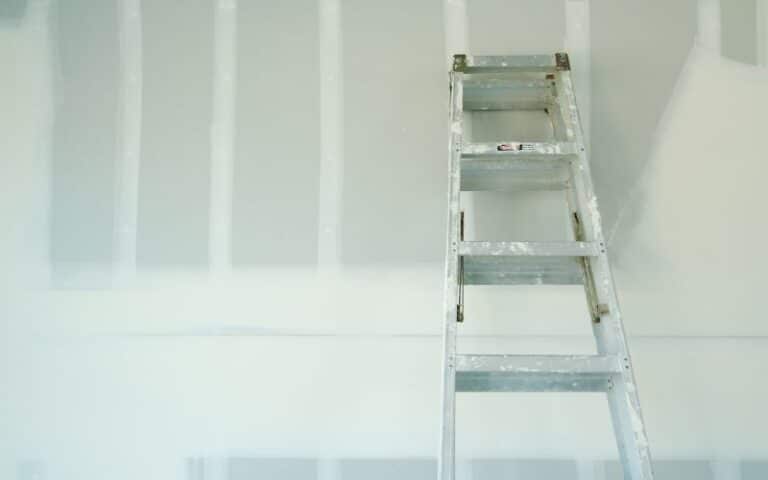Your roof’s first layer is wood sheathing, and then an underlayment on the next, followed by overlapping asphalt shingles.
This structure offers maximum protection for your roof against leaking. Most roofs with this structure are durable, but bad weather and old age can cause your roof to leak over time.
An underlayment like tar paper is necessary to absorb moisture. And help stop any leaks.
Tar paper is a waterproof material for roofs. Although it helps to lock out moisture, tar paper alone can not prevent roof leaks because it is not a complete roof structure and will eventually give way to heavy precipitation.
Ready for a Roofing Quiz?
Will Tar Paper Keep the Rain Out?
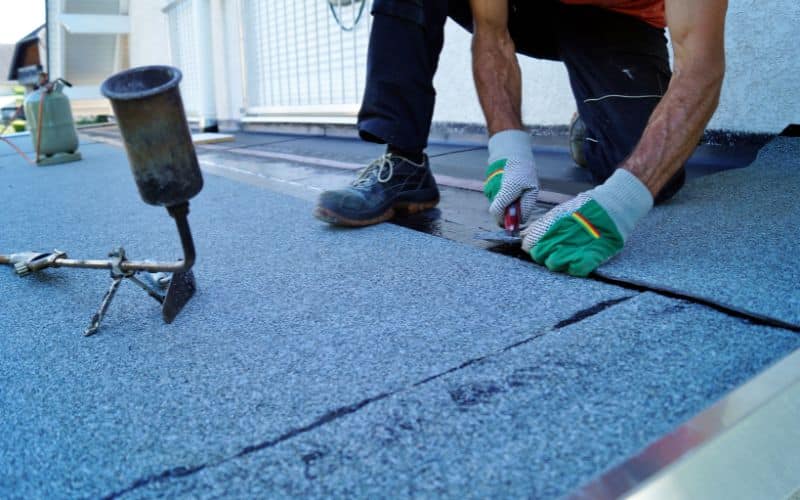
Tar paper, also called roofing felt paper, is a heavy-duty paper integrated with fiberglass paper to form a waterproof material for roofs.
So, tar paper can keep the rain out but not permanently because its formula has a natural base, often wood cellulose. It also adds a smooth look to your roof.
Tar paper is also covered in a water repellent coat such as asphalt; this makes it strong enough to withstand even a storm but not consistently over a long period.
To understand if tar paper can effectively keep the rain out, here are the reasons why rain gets into your roof:
- Age: When roof tiles become worn out due to age, a roof leak is inevitable.
- Poorly Installed Flashing: Flashings protect your roof joints, and water can sip into those joints and cause a leak if there’s a poorly installed flashing.
- Missing Roof Tiles or Slates: Missing roof tiles or slates leave empty spaces for water to enter your roofs
- Wildlife: Rodents and birds can make holes in your roof as they try to make homes on your roof
- Overhanging Trees: Overhanging trees’ twigs and branches can damage your roof tiles and cause leaks
- Ice Damming: Ice can create a dam that stops rainwater and snow from flowing away and cause pools will eventually sip into your roof.
- Clogged Gutters: Gutters help water flow off your roofs to avoid pooling which can cause roof leaking
- Condensation In Your Loft Space: If water condenses in your home’s loft, the moisture can build up and begin to drip down onto your loft floor and cause leaking.
Then, roofing tar paper can provide an extra layer of protection for your roof, but your roof tiles and shingles do most of the work.
So ensure that they are always in good shape. Also, conduct frequent checks on your roof to ensure trees or rodents aren’t compromising your roof’s integrity.
Do Roofing Tar Stop Leaks?
Roofing tar is a dark thick, and sticky waterproof substance. It is mainly made of coal tar and used for many roofing activities, including repairing leaks.
Although roofing tar effectively stops water from getting into your roof, it is only a temporary solution.
So if you notice a leak on your roof, here’s how to stop the leak temporarily:
- Find the leaking area on your roof.
- Clear the area, so you are sure what amount of damage needs repairs. Take off the removable tiles and brush any debris aside.
- Apply the roofing tar to the holes, preferably with a brush, since it can be messy. You can support this covering with some plywood or a piece of shingle.
- Place the removable tiles back.
Here are some reasons you should not rely only on roofing tar paper to permanently stop a leak.
- The tar can develop cracks as it dries, which can again expose your roof to leaks
- Tar is sensitive to temperature, and under extremely high temperatures, roofing tar can melt, re-exposing the leak.
- Roofing tars should not be used on asphalt products or thinned with water or other solvents.
So after you’ve covered up the leak, get to proper repair and replacement of your roofing materials.
What is the Purpose of Tar Paper on a Roof?
Tar paper is an underlayment that comes right before your shingles.
Using tar paper is a roofing technology first practiced during the gold rush and has continued to evolve since then, giving us the fiberglass roofing felt paper we use these days.
The main purpose of tar paper is to act as extra support for bad weather. It also helps your shingles meet Class A fire requirements.
How Long Does Roofing Tar Paper Last?
Roofing tar paper helps to guard your roof from bad weather. But it is important to know how long it lasts so you can replace it and prevent a leak.
It can last for about 12 to 20 years, with a weakening that starts immediately after a decade. Here’s how to know when your roofing paper needs replacement
- It cracks and so becomes ragged and makes your roof look rough
- The sheathing beneath it begins to rot because moisture has sipped in through the roofing tar
- Your roof begins to sag
- Visible watermarks on your ceiling
See More: Why Does My Roof Leak Where Addition Meets the House?
Advantages of Tar Paper on a Roof
Tar paper is a layer of material that’s added between the deck of your roof and your shingles. It is usually used as an underlayment and comes in different sizes to suit your roof.
It is a very affordable underlayment with other advantages. Here are some of its advantages and disadvantages:
| Advantages | Disadvantages |
|---|---|
| It Protects your home from water damage when water seeps in underneath your shingles. | It is not very strong and tears out easily, especially under winds. |
| It Protects your roof in case a shingle falls off. | It requires expert skill to install it. Its heaviness and slippery nature make it tricky to install. |
| It Improves your fire rating for some roof types. | It decomposes under UV rays and can become highly flammable. |
| It keeps your shingles from getting stained if resin from the decking wood leeches onto your shingles. | Its slippery feel makes it unsafe to walk on in case of a footfall that might require repairs. |
| It helps absorb the heat from the sun keeping your home cooler. | It does not perform well in temperatures above 35 degrees. |
| It helps give your roof an even and smooth look. It’s definitely for you if you appreciate aesthetic roofs. | It can become wrinkled if exposed to excessive moisture without its shingle covering. |
| It is quite affordable. | It does not last for more than 20 years. |
| It can be held in place with staples or roofing nails. | It requires constant maintenance. |
Tar paper is a good roofing option if you live in a climate that does not experience frequent storms and extremely high temperatures.
However, if you live in a very windy region with high temperatures, it’s advisable to opt for an alternative to tar paper.
The alternatives to tar paper are synthetic and rubber underlayment. These modern waterproof materials can withstand the wind, high temperatures, and other climate factors nature throws at them.
The only disadvantage is that they are more expensive than tar paper.
Conclusion
Your roof needs an underlayment like tar paper to help keep moisture out and act as a fire protection requirement.
However, roofing felt paper alone could not keep water out of your roof. Tar paper has many advantages like heat absorption and affordability, but it still has setbacks like being easily torn in high winds.


